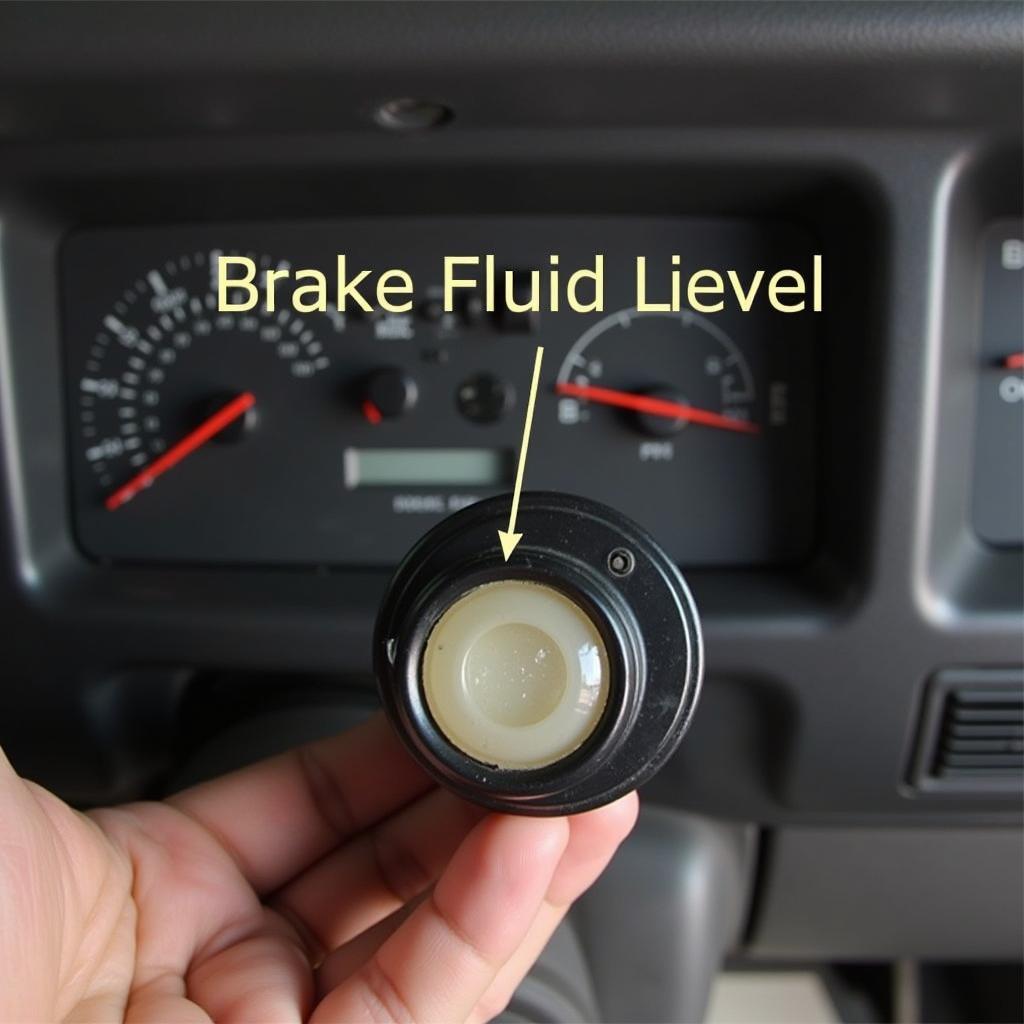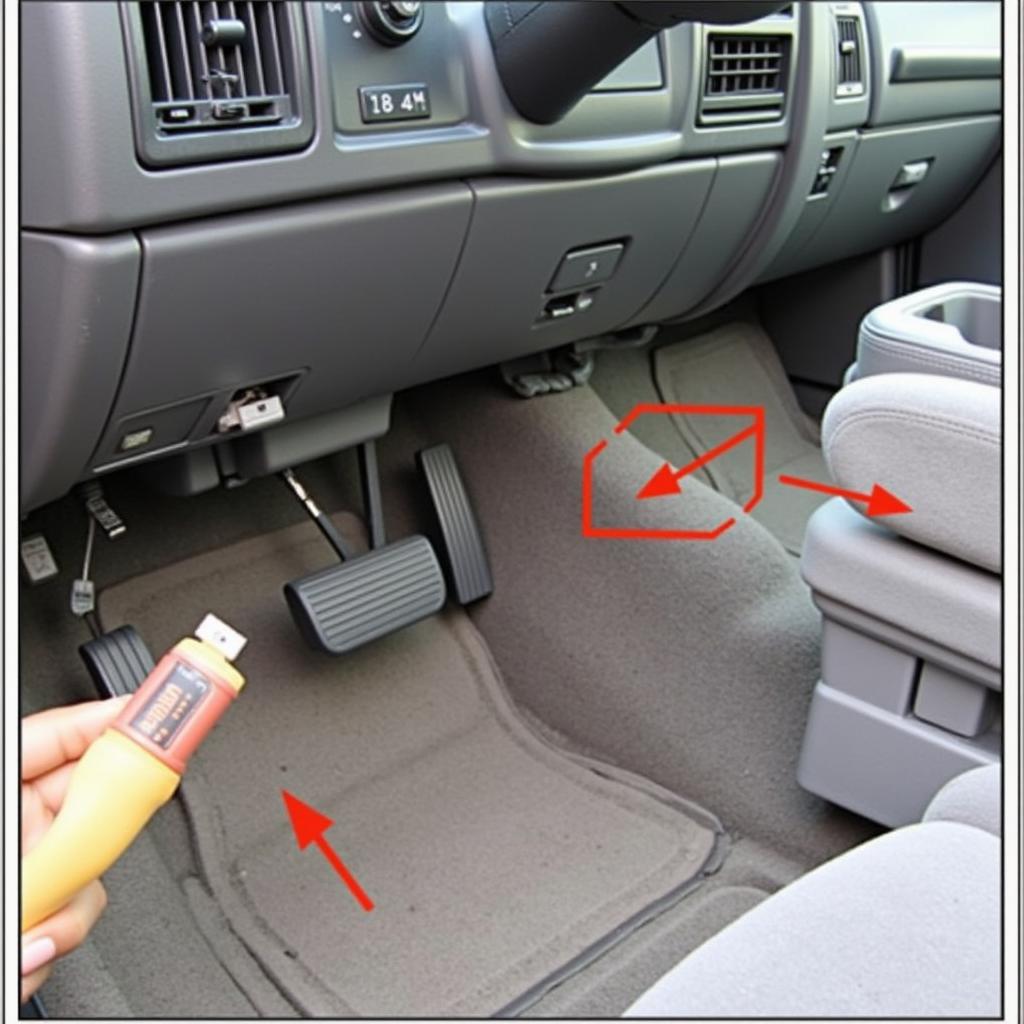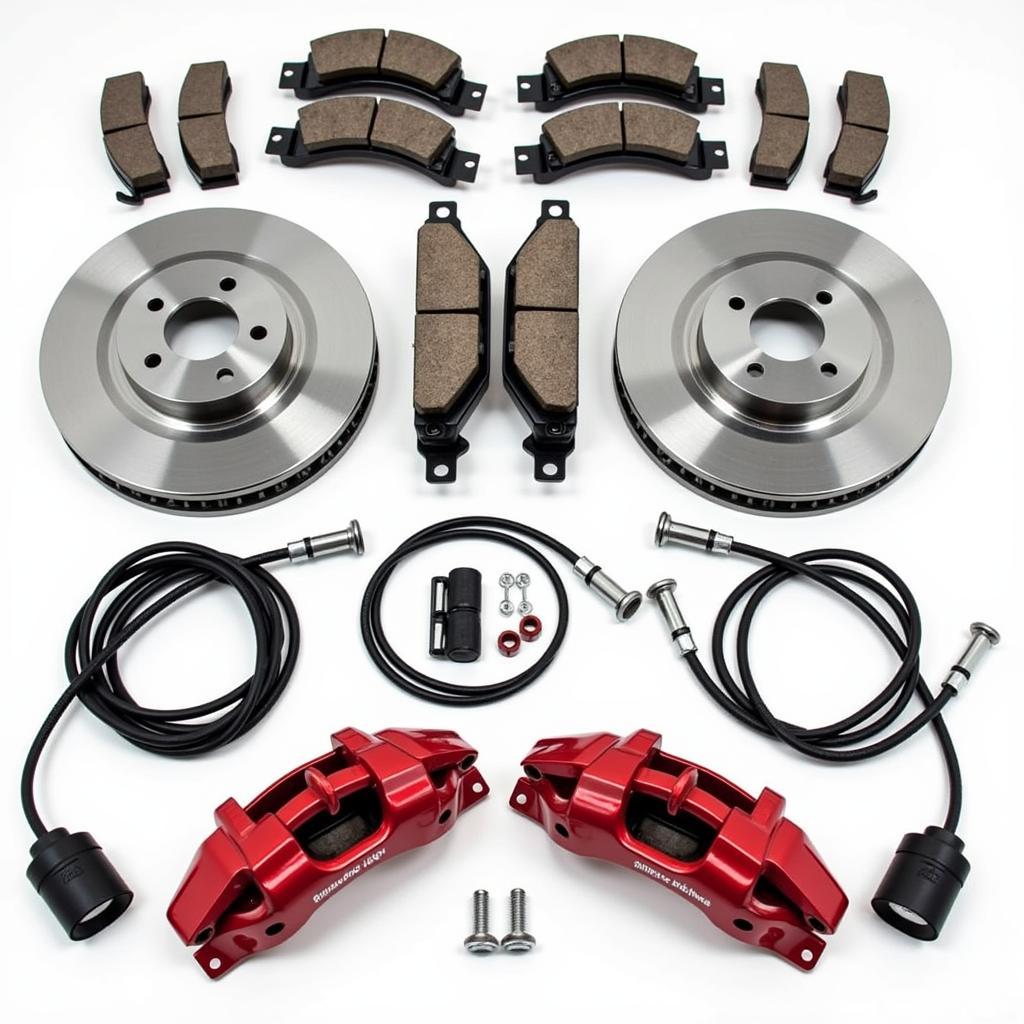The brake warning light on your 1998 GMC truck is a crucial safety feature designed to alert you to potential braking system issues. Ignoring this light could lead to reduced braking performance and increase the risk of an accident. This comprehensive guide delves into the common causes behind a 98 GMC brake warning light and provides practical troubleshooting steps to help you identify and potentially resolve the underlying problem.
Understanding Your GMC’s Brake Warning Light
When you start your truck, the brake warning light illuminates briefly as part of the system’s self-check. However, if the light stays on, flashes intermittently, or illuminates while driving, it indicates a problem requiring immediate attention.
Common Causes of a 98 GMC Brake Warning Light
Several factors can trigger the brake warning light in your 1998 GMC truck. Here are some of the most frequent culprits:
1. Low Brake Fluid Level
The most common cause is low brake fluid, often due to worn brake pads or a leak in the system. Brake fluid is essential for transmitting force from the brake pedal to the wheels, and a low level can significantly reduce braking effectiveness.
2. Worn Brake Pads
Brake pads naturally wear down over time. When they reach a certain thickness, a sensor triggers the brake warning light, indicating the need for replacement.
3. Faulty Brake Light Switch
The brake light switch, located near the brake pedal, activates your brake lights when you press the pedal. A malfunctioning switch can disrupt the brake warning light circuit, causing it to illuminate.
4. ABS System Issues
If your 1998 GMC is equipped with an Anti-lock Braking System (ABS), a problem within this system can trigger the brake warning light. This could be due to a faulty ABS sensor, control module, or wiring issues.
5. Emergency Brake Engaged
While seemingly obvious, accidentally leaving the emergency brake partially engaged can also trigger the warning light. Always ensure the emergency brake is fully released before driving.
Troubleshooting a 98 GMC Brake Warning Light
 Checking Brake Fluid Level in 98 GMC
Checking Brake Fluid Level in 98 GMC
Before attempting any troubleshooting, ensure the emergency brake is fully disengaged. If the warning light persists:
-
Check the Brake Fluid Level:
- Locate the brake fluid reservoir under the hood (refer to your owner’s manual if needed).
- Inspect the fluid level. If it’s below the minimum mark, add the correct brake fluid type as specified in your owner’s manual.
- Important: Driving with extremely low brake fluid can cause significant damage to the braking system. If the reservoir is empty, it’s crucial to inspect for leaks before adding fluid.
-
Inspect Brake Pads:
- If the brake fluid level is adequate, worn brake pads could be the culprit.
- Visually inspect the brake pads through the wheel spokes. If they appear thin or you notice a grinding noise when braking, it’s time for a replacement.
-
Test the Brake Light Switch:
- While this requires some mechanical aptitude, you can try testing the brake light switch by depressing and releasing the brake pedal while observing the brake lights.
- If the lights don’t illuminate consistently, the switch may need replacement.
 Brake Light Switch Location in 98 GMC Truck
Brake Light Switch Location in 98 GMC Truck
For ABS issues or if you’re uncomfortable performing these checks, it’s best to consult a qualified mechanic.
When to Seek Professional Help
While some brake warning light issues can be addressed with basic troubleshooting, certain situations warrant professional attention:
- Fluid Leak: If you suspect a brake fluid leak, it’s crucial to have it addressed by a professional immediately.
- ABS Warning Light: If the ABS light illuminates alongside the brake warning light, it indicates a potential issue within the ABS system, requiring specialized diagnostic equipment.
- Electrical Problems: If you suspect an electrical fault related to the brake light switch or other components, it’s best to leave the diagnosis and repair to an experienced mechanic.
Preventing Future Brake Warning Light Issues
 Routine Brake Maintenance for 98 GMC
Routine Brake Maintenance for 98 GMC
Regular maintenance is key to preventing brake problems. Follow these tips to keep your 1998 GMC’s braking system in optimal condition:
- Regular Brake Inspections: Have your brakes inspected annually or every 12,000 miles, whichever comes first.
- Timely Brake Pad Replacement: Don’t wait for the brake warning light to come on. Replace brake pads according to the manufacturer’s recommendations or when they approach the wear limit.
- Brake Fluid Flush: Have your brake fluid flushed and replaced every 2-3 years or as recommended by your owner’s manual.
- Address Issues Promptly: Don’t ignore any signs of brake problems, such as unusual noises, vibrations, or pulling to one side while braking.
Expert Insight: “Regular brake system maintenance is not just about fixing problems; it’s about preventing them. By being proactive, you can significantly extend the lifespan of your brakes and ensure optimal safety on the road.” – John Miller, Certified Automotive Technician
Conclusion
The brake warning light in your 1998 GMC truck is a critical safety indicator that should never be ignored. By understanding the common causes and following the troubleshooting steps outlined in this guide, you can potentially identify and address some issues. However, always remember that professional help is crucial for complex problems or if you’re uncomfortable working on your vehicle’s braking system. Prioritizing regular brake system maintenance is the most effective way to ensure optimal braking performance and safety for you and your passengers.

